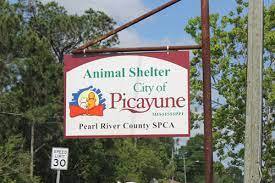Amount of solid waste dumped debated
Published 2:38 am Sunday, July 2, 2006
Garbage is a dirty business, but a county without a landfill is even dirtier.
The second meeting of the Solid Waste Advisory Committee took place Thursday night to discuss the history of waste in the county and what the future holds.
Mike Hall, Waste Management District Manager, said in previous Board of Supervisors meetings that if the tonnage does not pick up at Central Landfill Pearl River County’s only waste dump may have to close.
Solid Waste Advisory Council member Richard Swenson presented his case to Hall concerning Waste Management’s need to expand its coverage area to remain open. Hall said there is a dramatic decline in the tonnage of waste coming to the site. Swenson presented facts he collected stating the decline was only 11 percent over the last seven years, figures Hall did not contest.
Hurricane Katrina did present Central Landfill with a considerable increase in business, Hall said. However Hall does not foresee that increase to hold, he said. Swenson said there is an increase in population since the storm that could potentially provide the business the landfill needs to remain open. Hall did not argue that fact, but held to his conservative outlook.
However Hall did present an outlook for 2007, which was considerably lower than Swenson believes the collection will be.
Figures rounded up by Hall reflect that from August to December of 2005 the landfill collected 182,515 tons of waste, mostly from storm clean up, Hall said. From January to June in 2006 the landfill collected 174,873 tons of waste, Hall’s report states. Hall estimates the site will collect 126,000 tons of waste in 2007. Slightly up from the 2004 yearly collection of 125,059 tons.
In 1977, when Solid Waste Advisory Council member C. Randy Holland moved to this county, there was no waste disposal organization in Pearl River County. Holland said he asked a neighbor what to do with his waste, to which the neighbor replied, “What ever you want.”
Instead of dumping waste in the woods, Holland adopted his parent’s method of burning the burnable waste, composting the decomposable waste and burying the rest on his land, he said. Then sometime later Tommy Whitfield opened a dump at the old site in Millard, Holland said.
“It was not pleasant to go to Tommy’s facility,” Holland said.
To make the dump a pubic place to put waste the county paid Whitfield $10,000 a month so county residents could dump for free, Holland said. Whitfield sold the site to Transamerica after the county refused to pay him any longer, Holland said. The Pearl River County Board of Supervisors entered into a contract with Transamerica to collect about $5,000 a month, instead of paying out, Holland said. Transamerica was later bought out by Waste Management, who took over responsibilities and the contract of the old site, Holland said. County residents still had the privilege of depositing their waste at the site for free, Holland said. Alleviating the trash in unsightly places.
“The culture here for many, many years has been to throw it in the woods,” Holland said.
The board of supervisors or county residents have no control of how the site operates according to the host agreement, County Administrator Adrain Lumpkin said. The host agreement the county and Transamerica, now Waste Management, entered into states that the company can accept waste regardless of its point of origin, the site can close if the tonnage coming into the site is not sufficient and the host fee paid to the county can never exceed $1 per ton.
Another controversial aspect of the site is the footprint, or area where the waste is stored. The foot print of the existing site is currently in an odd shape because when the site opened initially it was done in a rush so the old site could close, since the old site was an environmental hazard, Hall said.
The horseshoe shaped footprint is not efficient, Hall said. Previously mitigation problems placed holds on the process of expanding the foot print, Hall said. Currently those wetlands have been mitigated, or replaced with equal amounts of wetlands, Hall said.
A class D landfill, the classification of Central Landfill, adheres to strict regulations, Hall said. First the site is laid on the bottom with clay, then a leachate collection system is set on top of a welded flexible liner, Hall said. Leachate is the liquid collected from waste, Hall said. At Central Landfill leachate is recycled back on to the top of the site to maintain waste dampness ensuring decomposition, Hall said. Then another layer of permeable substance is placed on top of the leachate collection system before waste is piled on top, Hall said. Everyday the waste is covered with a layer of soil to keep odor to a minimum, Hall said. When the site is full top soil will cover the site along with vegetation, at which time the site will continue to be monitored for 30 years minimum, Hall said.
Decomposing waste produces a gas that could be used as an alternative energy source, Hall said. Currently Waste Management is looking for an end user for the gas.
“It’s still preliminary, but we are looking at some ideas,” Hall said.
The next meeting of the Solid Waste Advisory Council will be July 13, 6:30 p.m. in the Millard Jail courtroom.



